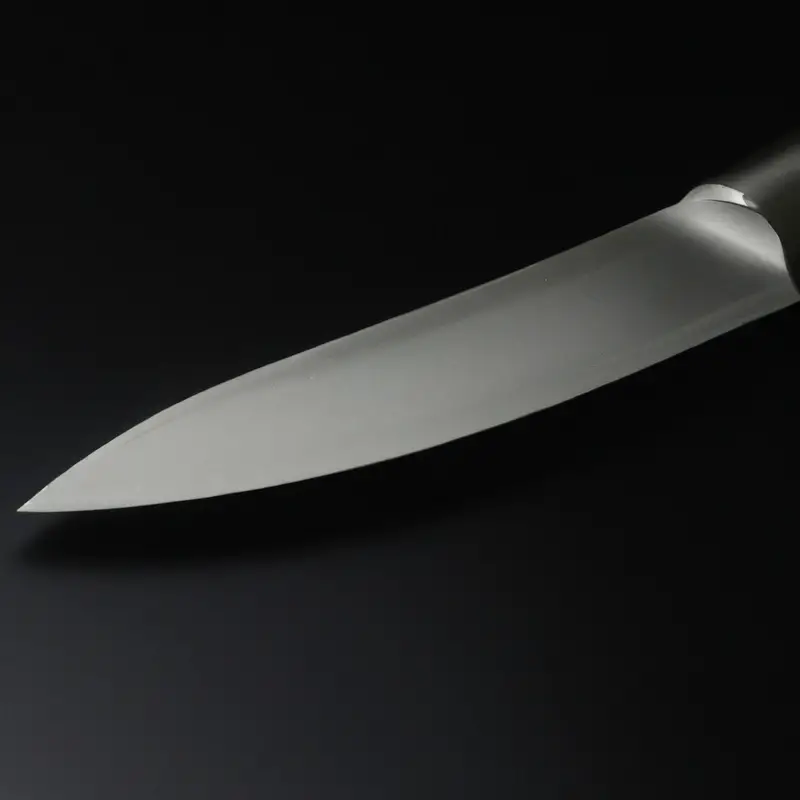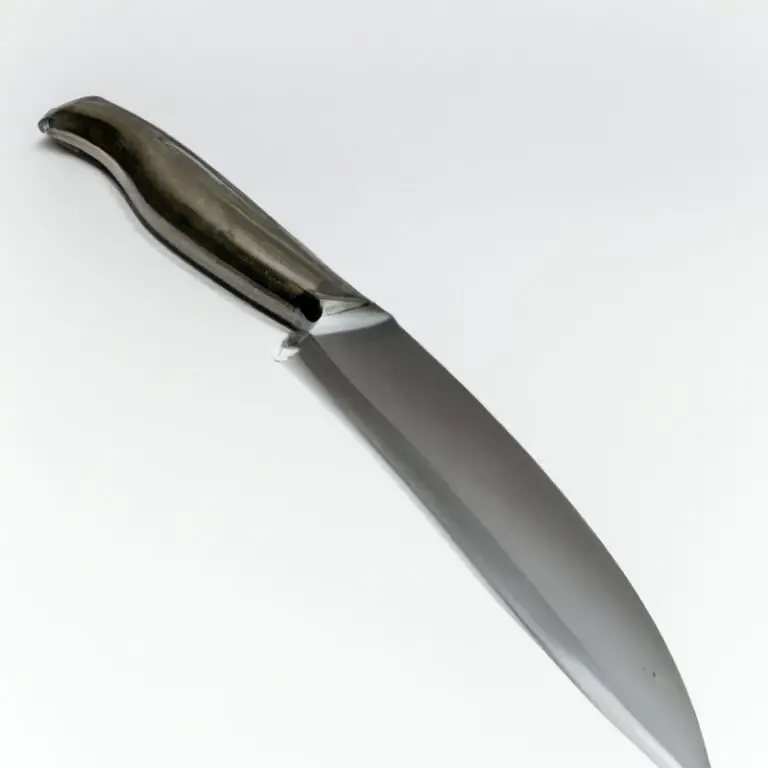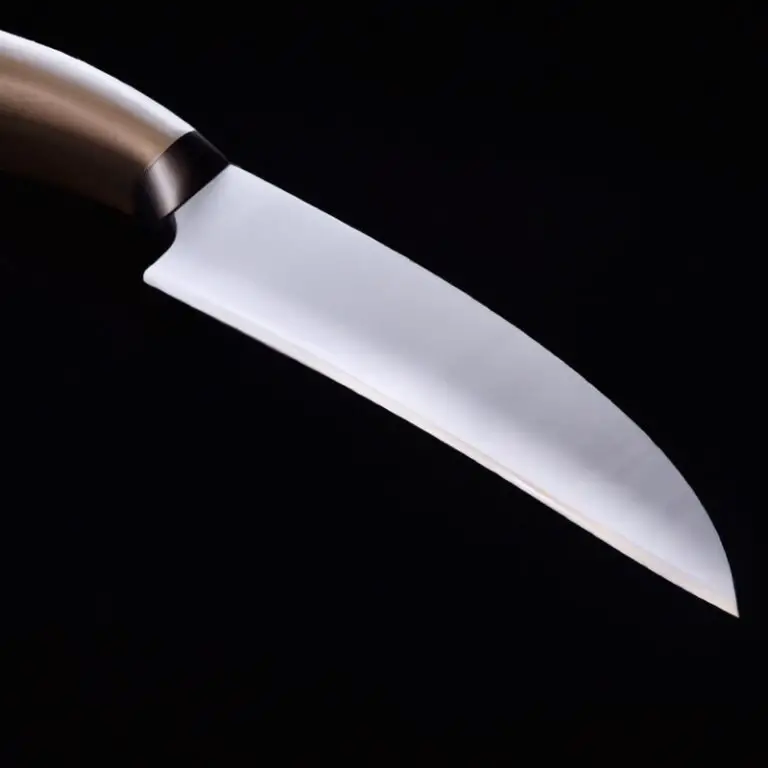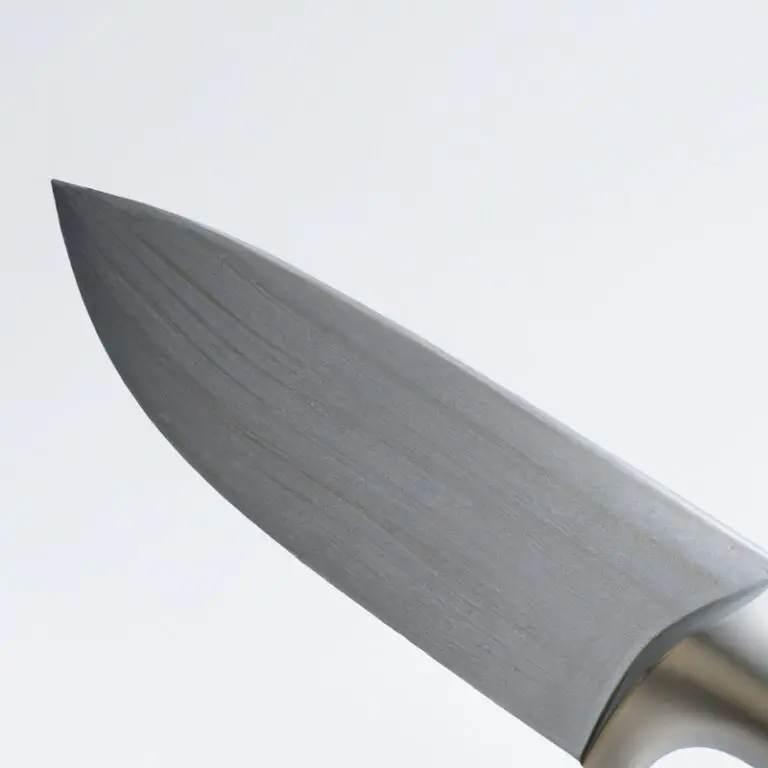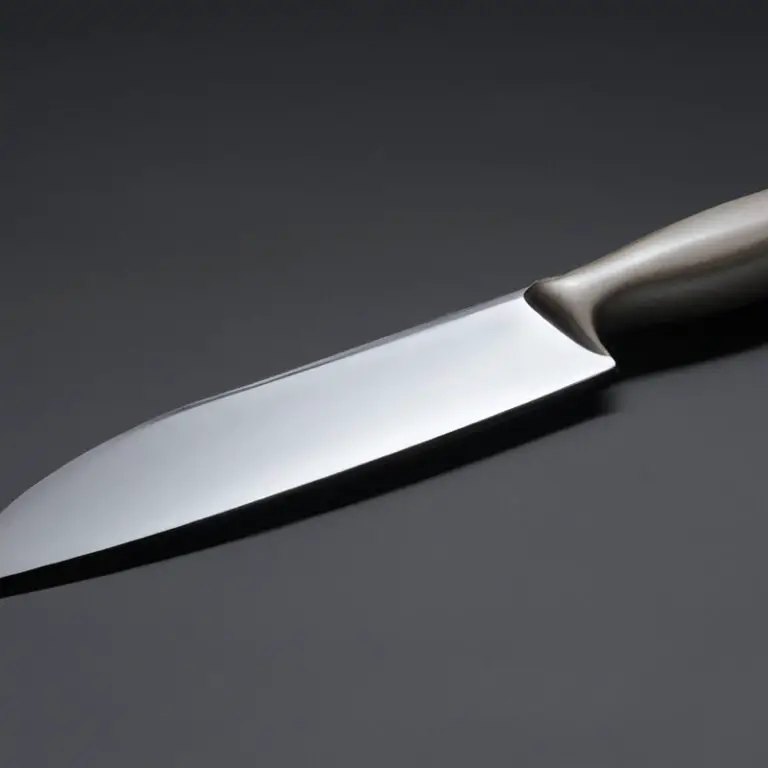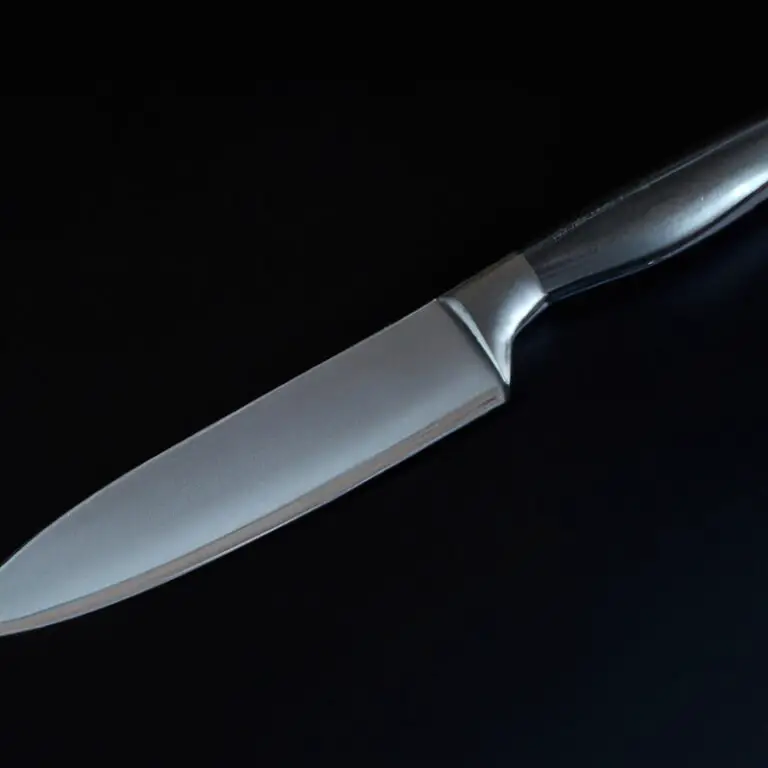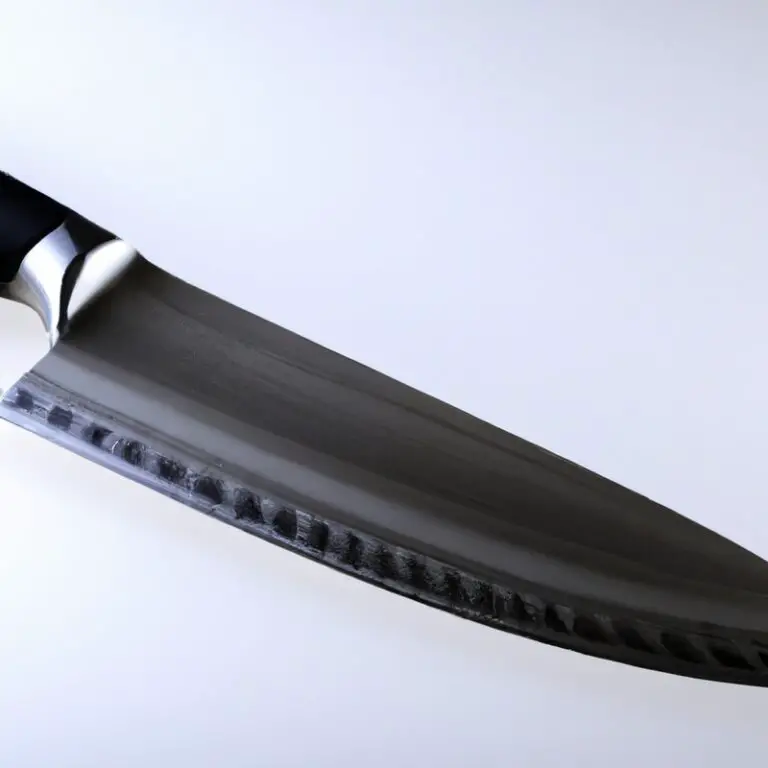Are Santoku Knives Suitable For Camping Trips? Yes!
Key Takeaways:
- Santoku knives are a versatile and efficient cutting tool for camping trips, thanks to their compact size and sharpness.
- The unique design of Santoku knives makes them ideal for slicing, chopping, and dicing tough materials like meat, fish, and vegetables.
- When choosing a Santoku knife for camping, look for durable materials and a secure handle to ensure safe and comfortable usage.
- With proper care and maintenance, a Santoku knife can be a reliable and valuable addition to your camping gear.
When it comes to camping, having the right gear is essential. And one of the most important pieces of equipment is a reliable and versatile knife.
Santoku knives have become increasingly popular in recent years, with their unique design and exceptional cutting ability.
But are they suitable for camping trips? In this article, we’ll explore the advantages and disadvantages of using a Santoku knife in the great outdoors, factors to consider when choosing one for your camping needs, and tips for proper maintenance and use.
Get ready to discover how a Santoku knife can enhance your camping cooking experience.
Table: Comparing Chef’s knife and Santoku knife for Camping Trips| Criteria | Chef’s knife | Santoku knife |
|---|---|---|
| Size and Weight | Heavier and larger than Santoku knife | Lighter and more compact than Chef’s knife |
| Blade shape | Wide and rounded blade | Straight and narrow blade with flatter edge |
| Blade usage | Good for rocking motion and chopping | Best for slicing or push cutting |
| Skill level | Requires more skill and practice due to its weight and size | Easy to handle, perfect for beginners |
| Price | Usually more expensive | Less expensive compared to Chef’s knife |
| Versatility | More versatile, suitable for a wide range of cutting tasks including meat and produce | Not as versatile as the Chef’s knife, but still suitable for most general cutting needs |
| Camping convenience | May not be practical or convenient to carry on camping trips due to its size and weight | Lightweight and compact design makes it perfect for camping and outdoor activities |
What is a Santoku knife and why is it popular?
A Santoku knife is a versatile Japanese knife that has gained popularity in recent years. It has a shorter, wider blade with a straighter edge compared to a traditional chef’s knife.
The name “Santoku” means “three virtues” in Japanese, which refers to its ability to slice, dice, and mince.
Santoku knives are popular because they are excellent all-purpose knives that can handle various cutting tasks with ease. They have a sharp edge that can maintain its sharpness for a longer time, thanks to its hard and durable steel.
Additionally, the flat blade and gentle curves make it easy to slice through food without the need for a rocking motion.
The knife’s ergonomic handle design also makes it comfortable to use for extended periods of time. Its compact size also makes it easier to maneuver and store.
The knife’s versatility makes it ideal for a wide range of cooking situations, from preparing vegetables to slicing meats.
In summary, the Santoku knife’s popularity is due to its versatility, sharpness, durability, ease of use, and compact size. Its ability to handle various cutting tasks with ease makes it an excellent addition to any kitchen or camping trip.
Can Santoku knives be used for outdoor activities like camping?
Santoku knives can be used for outdoor activities like camping. However, it is crucial to consider the type of camping activities involved, as well as the knife’s features and durability.
A Santoku knife can be an excellent option for camping trips due to its versatility and sharpness.
Proper storage, maintenance, and care practices are also necessary to ensure the knife lasts for an extended period. It is recommended to purchase a Santoku knife specifically designed for camping, as it may have additional features like a non-slip grip, lightweight, and compact design for easy transportation.
Remember, safety is paramount when using any knife, so always follow the correct handling and usage procedures.
Factors to consider when choosing a knife for camping trips
When choosing a knife for camping trips, there are several factors to consider to ensure that you have a safe and successful outdoor experience. Some of these factors include the size of the knife, the type of blade, the handle grip, and the weight.
A good knife for camping should be durable, sturdy, and easy to handle.
It should also be versatile enough to perform multiple tasks like chopping wood, preparing food, and cutting ropes or cords. Additionally, you should consider the knife’s maintenance requirements, especially when it comes to sharpening the blade and cleaning it.
Lastly, you should choose a knife that fits comfortably in your hand and one that you can easily carry on your camping trips.
By considering these factors, you can find a knife that is perfect for all your camping needs.
Advantages and disadvantages of using a Santoku knife for camping
Advantages of using a Santoku knife for camping:
- Versatile and suitable for various cutting and chopping tasks
- Lightweight and easy to carry around
- Comfortable grip for extended use
- Can double as a kitchen knife for meal prep
Disadvantages of using a Santoku knife for camping:
- Limited blade length may not be suitable for bigger chopping tasks
- Some models may not have a serrated edge for tougher cuts
- Requires precise handling and may not be suitable for inexperienced users
Overall, a Santoku knife can be a useful addition to your camping gear for its versatility, but you should consider your specific camping needs and skill level before choosing one.
Essential features to look for in a Santoku knife for camping
When choosing a Santoku knife for camping, there are certain essential features that you should look for to ensure optimal performance and durability during outdoor activities. These features include:
- Blade Material: Look for a blade made of high-quality, durable steel that can withstand the rigors of outdoor use and resist corrosion.
- Blade Length: A blade length between 5-7 inches is recommended for camping trips as it provides a good balance between versatility and portability.
- Blade Geometry: Opt for a Santoku knife with a flat or slightly curved blade with a sharp tip that can easily handle slicing, chopping, and mincing tasks.
- Handle Material: Choose a handle that provides a comfortable and secure grip even in wet conditions. Popular materials include wood, rubber, and polymer.
- Tang: A full-tang knife is preferable as it ensures the blade and handle are firmly attached and reduces the risk of the blade breaking off during use.
- Sheath: Look for a knife with a protective sheath that keeps the blade safely covered when not in use and prevents accidental injuries.
By considering these essential features, you can ensure that you choose a Santoku knife that is reliable, durable, and suitable for your camping needs.
How to properly maintain and care for a Santoku knife during outdoor trips
Proper maintenance and care of a Santoku knife during camping trips is crucial to ensure its longevity and performance. Here are some tips to follow:
- Keep it dry: After using your Santoku knife, wipe it dry with a cloth to prevent rust and corrosion.
- Store it safely: Invest in a protective sheath or knife roll to keep your Santoku knife secure during transportation and storage.
- Sharpen regularly: A dull knife is more dangerous than a sharp one. Bring a portable sharpener or honing rod to keep your Santoku knife sharp during camping trips.
- Avoid cutting hard materials: Santoku knives are not designed to handle tough materials like bones or frozen meat. Stick to cutting soft foods like fruits, vegetables, and meats.
- Clean it properly: Use mild soap and warm water to clean your Santoku knife. Rinse thoroughly and dry immediately after cleaning. Avoid using abrasive sponges or cleaners as they can damage the blade.
By following these simple steps, you can keep your Santoku knife in top condition during outdoor trips. Proper maintenance and care will ensure that it remains a reliable tool for all your camping culinary needs.
What sets a camping Santoku knife apart from regular Santoku knives?
A camping Santoku knife differs from a regular Santoku knife in its design and composition. The camping version typically has a more robust blade to handle outdoor activities such as wood cutting and preparation of tougher, larger food items.
It may also have a protective sheath to keep the blade safe during transportation.
The camping Santoku knife should have a full tang, where the blade runs the complete length of the handle, to ensure durability. Additionally, the handle should be made of a non-slip material to provide a firm grip even in wet conditions.
Overall, the camping Santoku knife is a versatile tool that can be used for a variety of tasks while camping and is a great addition to any outdoor enthusiast’s gear.
Top brands of Santoku knives for camping and their unique features
Some of the top brands of Santoku knives for camping include Victorinox, Shun, Global, and Wusthof. Victorinox is known for its durable and affordable knives, while Shun offers high-end options with sharp blades and comfortable handles.
Global knives are lightweight and feature a unique design with a stainless steel handle.
Wusthof, on the other hand, is a German brand that produces heavy-duty knives with strong blades and comfortable handles. Unique features of these brands may include ergonomic handles, rust-resistant blades, and versatile blade edges that can handle various types of foods.
Some brands also offer compact sizes for easy portability during camping trips.
When choosing a Santoku knife for camping, consider the specific features that align with your needs and preferences, as well as the reputation and quality of the brand.
Techniques for using a Santoku knife during camping and outdoor activities
Santoku knives can be highly effective for camping purposes when used correctly. Here are some techniques to use them effectively during camping and outdoor activities:
- Use a cutting board: Always use a cutting board when cutting food with a Santoku knife. It will provide a flat surface for better control and accuracy.
- Use the right grip: Hold the knife handle with a secure but relaxed grip. Use your other hand to hold the food in place while cutting.
- Slice rather than chop: Santoku knives are designed for slicing, not chopping, unlike other knives. Use a gentle slicing motion to cut through food.
- Angling the knife: Angle the knife slightly to achieve the desired thickness when slicing. It will help you cut through the food with ease.
- Maintain sharpness: Keep the Santoku knife sharp at all times by sharpening it regularly, ideally before any camping trip.
- Store carefully: Store the Santoku knife separately from other camping gear and wrap it in a sheath when not in use.
By implementing these techniques, you can increase the efficiency of your Santoku knife during camping trips, ensuring a seamless and safe culinary experience while surrounded by nature.
How to sharpen a Santoku knife when on a camping trip
To sharpen your Santoku knife effectively when on a camping trip, you will need a portable sharpening tool such as a whetstone, honing rod, or sharpening stone. Follow these steps to sharpen your Santoku knife:
- Wet the sharpening tool with water before use.
- Begin sharpening by placing the Santoku knife at a 15 to 20-degree angle against the sharpening tool.
- Start from the base of the blade, moving the knife across and down the sharpening tool.
- Repeat on both sides of the blade, alternating with the same number of strokes until you achieve the desired sharpness.
- Once complete, rinse the blade with water and dry it thoroughly. Your Santoku knife is now sharp and ready to use.
Keep in mind that regular maintenance and sharpening of your Santoku knife during a camping trip is necessary to ensure its longevity and efficient use. It is also crucial to keep the blade well-oiled and to store it securely to avoid any accidents.
Best practices when packing and storing a Santoku knife for camping trips
When packing and storing a Santoku knife for camping trips, it’s important to follow some best practices to ensure safety and proper care of the knife. Here are some tips to keep in mind:
- Use a sheath or blade guard to protect the blade and prevent any accidental injuries.
- Wrap the handle with a cloth or towel to prevent any scratches, dents, or damage.
- Store the knife in a dry and cool place to prevent rust and corrosion from excessive moisture.
- Keep the knife away from other sharp objects or heavy items that could damage the blade.
- Make sure the knife is fully dry before packing it to prevent any mold or mildew growth.
- Pack the knife in a separate compartment or case to avoid any contact with food or other utensils.
By following these best practices, you can ensure that your Santoku knife remains in excellent condition throughout your camping trip. Remember to handle the knife with care and avoid any rough handling or misuse to prolong its lifespan.
Personal experiences of campers who have used Santoku knives for cooking in the wilderness
Campers who have used Santoku knives for cooking during their outdoor adventures report positive experiences. They appreciate the lightweight, easy-to-use design of the Santoku knife and its versatility in performing a range of kitchen tasks.
The sharpness of the blade has been especially helpful in cutting through tough meat, vegetables, and fruit.
The length of the blade has also been noted as being optimal for slicing and dicing larger items. However, some campers have pointed out that the flat blade may not be ideal for tasks that require a rocking motion.
Regardless, those who have used Santoku knives for camping claim they will continue to do so and recommend it to others.
Alternative knife options for campers: Pros and cons of using other types of knives
While Santoku knives are a popular choice for camping trips, there are alternative knives to consider. One option is a fixed blade knife, which is durable and offers efficient cutting.
A folding knife, on the other hand, is compact and easy to carry, but may not be as sturdy as a fixed blade knife.
Multi-tools are also a great option as they offer various tools, including a knife, in one compact package. However, they may not be as efficient for cutting as a dedicated knife.
When choosing an alternative knife, consider the size, weight, durability, and ease of use.
It’s also important to prioritize safety and choose a knife with a secure grip and a sheath or cover for protection. Overall, the choice of knife comes down to personal preference and intended use.
Safety tips for using any type of knife during camping trips
Safety should be a top priority when using any type of knife during camping trips. Here are some tips to keep in mind:
- Always use a sharp knife. Dull knives require more force, increasing the chance of slippage and injury.
- Keep your knife in a sheath or protective cover when not in use.
- Always cut away from your body.
- Use a cutting board or other flat and stable surface to prevent slips.
- Store your knife safely, out of reach of children and animals.
- Never hand a knife to someone else blade first; always offer the handle.
- If you need to pass a knife to someone, set it down and let them pick it up.
- Pay attention to your surroundings. Don’t use a knife when distracted or in an unstable position.
- Keep your fingers away from the blade at all times.
- Carry a first aid kit and know how to handle minor cuts and injuries.
Remember, using a knife can be dangerous and requires focus and caution. By following these safety tips, you can minimize the risk of accidents and enjoy your camping trip with confidence.
How to choose the right-sized Santoku knife for your camping needs
When choosing a Santoku knife for camping, consider the blade length. A blade length of 5-7 inches is suitable to handle most camping tasks.
Lightweight, compact knives are ideal for easy portability and handling.
It’s also essential to choose a knife made of high-quality materials that can withstand the rigors of outdoor use. Look for knives with a sturdy and comfortable handle for a secure grip, even in wet conditions.
Consider the weight and balance of the knife to ensure it’s comfortable to handle for extended periods.
Keep in mind that a properly sized Santoku knife for camping should be suitable for a variety of tasks, from carving to chopping.
Comparing the Santoku knife to other popular camping knives available in the market
Compared to other popular camping knives, the Santoku knife may not be the best option for all camping needs. While it excels in slicing, chopping, and dicing, it may not be as versatile for tasks such as wood carving or batoning.
Other popular camping knife options include the Bowie knife, the survival knife, and the pocket knife.
Each of these knives has its advantages and disadvantages, and it ultimately comes down to personal preference and specific camping needs. The Bowie knife is a larger knife with a curved blade, ideal for heavy-duty tasks, while the survival knife features a serrated edge and built-in survival features such as a fire starter and whistle.
Pocket knives are compact and versatile, perfect for everyday use.
When choosing a camping knife, consider the tasks you will be performing and choose a knife that will best suit your needs.
How to incorporate the use of a Santoku knife in your overall camping gear
To incorporate the use of a Santoku knife in your overall camping gear, there are a few key steps to follow. First, choose a durable and high-quality knife that is specifically designed for outdoor use.
Look for features such as a sturdy handle and a sharp, rust-resistant blade.
Next, make sure to pack and store your knife safely and securely during your camping trip. Consider investing in a protective sheath or case to keep your knife sharp and prevent accidental injuries.
When cooking with your Santoku knife in the wilderness, use a cutting board or other flat, stable surface to prevent slippage and ensure safe and efficient cutting.
Always keep your knife clean and dry to prevent rust and other damage. Finally, consider using your Santoku knife in conjunction with other camping gear, such as a portable grill or cast iron skillet, to prepare delicious meals during your outdoor adventures.
With its versatility and precision, a Santoku knife can be an indispensable tool for any camping trip.
Best recipes to prepare with a Santoku knife while on a camping trip
When it comes to using a Santoku knife for cooking during a camping trip, there are numerous recipes available that require specific cutting techniques. Here are some of the best recipes that you can prepare with a Santoku knife while on a camping trip:
- Grilled chicken skewers – Use your Santoku knife to cut chicken breasts into small cubes and skewer them. Season with your preferred spices and grill over an open fire.
- Vegetable stir-fry – Use your Santoku knife to chop a variety of fresh vegetables like onions, peppers, carrots, and broccoli. Cook them in a skillet over a camp stove with oil, soy sauce, and additional seasoning.
- Beef or pork stir-fry – Cut your beef or pork into thin strips using your Santoku knife. Stir-fry the meat with vegetables and soy sauce in a skillet until cooked to your liking.
- Sushi rolls – Use your Santoku knife to slice raw fish into small pieces to make sushi rolls. You can also slice various vegetables using your Santoku knife to make vegetarian sushi rolls.
- Fresh fruit salad – Use your Santoku knife to chop fresh fruits like watermelon, pineapple, and strawberries to make a refreshing fruit salad.
With a sharp and versatile Santoku knife, you can prepare a variety of meals while on a camping trip, making your outdoor adventure more enjoyable.
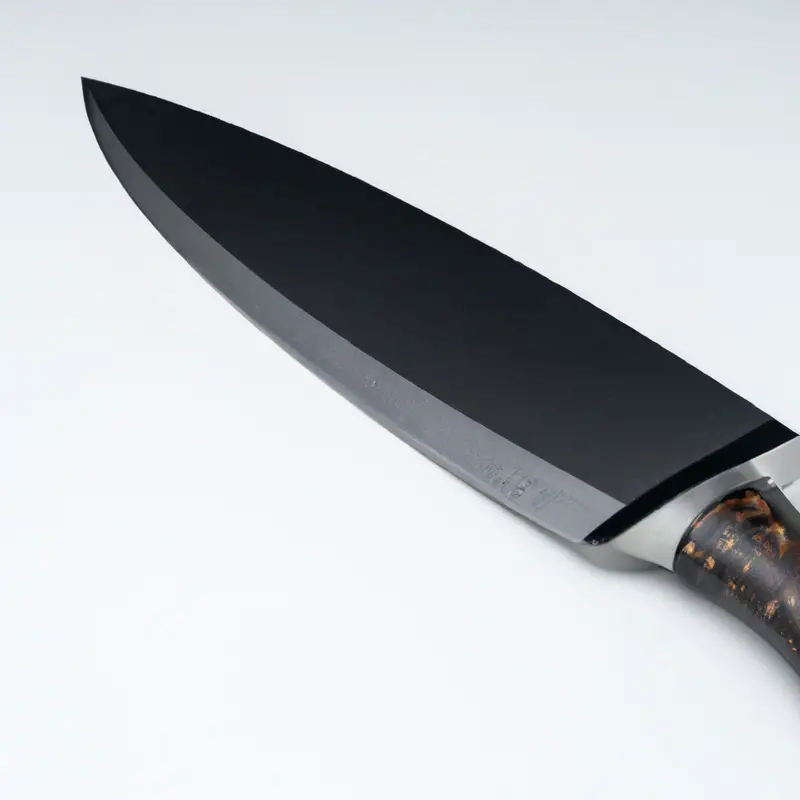
How to avoid common mistakes when using a Santoku knife for camping
When using a Santoku knife for camping trips, there are some common mistakes to avoid to ensure safety and optimal performance. Here are some tips to help you:
- Don’t use the knife for tasks it’s not designed for, such as chopping wood or sawing through thick branches. This can damage the blade and make it unsafe to use.
- Avoid cutting on a hard surface, like a rock or metal surface, which can dull or chip the blade. Instead, use a cutting board or a soft surface like an old towel.
- Make sure to keep the blade dry to prevent rust or corrosion. Wipe the blade dry after each use and store it in a dry place.
- Don’t leave your Santoku knife in a damp sheath or container, as this can also promote rusting. Instead, use a well-ventilated container or sheath, or wrap the knife in a dry cloth.
- When using the knife, be sure to maintain a secure grip and avoid cutting towards yourself or others.
By following these tips, you can avoid common mistakes when using a Santoku knife for camping and ensure a safe and enjoyable outdoor experience.
Final thoughts on the suitability of Santoku knives for camping trips
Santoku knives are suitable for camping trips based on their versatility and functionality. They are perfect for cutting, slicing, and chopping fruits, vegetables, and meats.
However, there are specific factors to consider when choosing a Santoku knife for camping, such as the blade size, material, and handle grip.
It is essential to properly maintain and care for the knife during outdoor trips to ensure its longevity and effectiveness. Additionally, it is essential to use the knife safely and avoid common mistakes when handling it.
Overall, a camping Santoku knife can be an excellent addition to any camping gear for cooking and meal preparation.
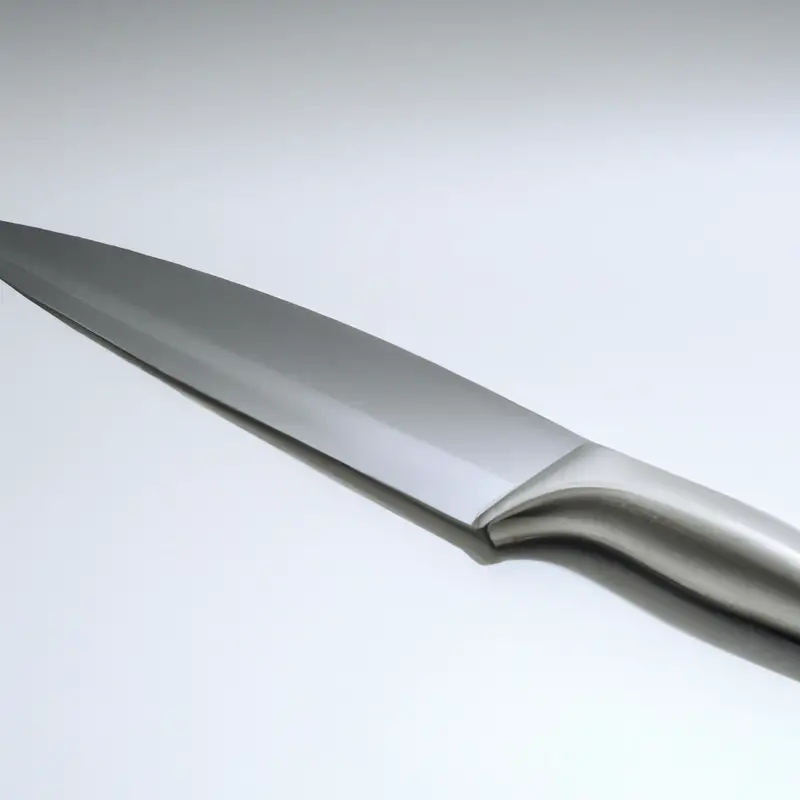
Final Verdict
Santoku knives can be a great option for camping trips due to their versatility, precision, and ease of use. However, choosing the right Santoku knife for camping requires careful consideration of essential features such as size, weight, blade material, and handle design.
Also, proper maintenance and storage are crucial to maximize the lifespan of your knife and ensure its optimal performance in the wilderness.
Although other knives may offer different functionalities, a well-chosen Santoku knife can provide a reliable and enjoyable cooking experience for campers. Whether you are a seasoned outdoor enthusiast or a beginner, investing in a quality Santoku knife can significantly enhance your camping adventures.
Remember to always prioritize safety and mindful usage when handling any knife in the wilderness.
Happy camping and happy cooking!

